When you think of the Siamese cat, you’re probably picturing those piercing blue eyes and sleek, elegant bodies. But did you know their story dates back centuries to the royal courts of Thailand, formerly known as Siam? The history of Siamese cats goes beyond their life as pets, or a lower being. No, they were revered. In ancient Siam, the history of Siamese cats were considered sacred animals, often living in temples and believed to bring good luck and protection to their owners. Ancient manuscripts called Tamra Maew, also known as Cat-Book Poems, described and illustrated different cat breeds from the Ayutthaya Kingdom, particularly focusing on the heritage and unique traits of Siamese cats. Imagine having a cat that was practically worshipped!
The first known Siamese cats were documented as early as the 14th century in Thailand (formerly Siam). They were considered sacred and were kept in the temples, often living alongside royalty and nobility. However, these early Siamese cats didn’t look exactly like the modern version we know today.
The history of Siamese cats has fascinated many throughout the centuries, leading to their revered status in various cultures.
In the late 19th century, the history of Siamese cats continued as they became popular pets in Western society, showcasing their unique background.
Table of Contents
The breed was introduced to the Western world in the late 19th century. In 1884, a pair of Siamese cats were presented to the British royal family, and soon after, the breed gained popularity in Europe and the United States. The cats’ striking appearance and unique personality quickly captured the attention of cat lovers. In fact, the Siamese breed was officially recognized by the Cat Fanciers’ Association (CFA) in the early 1900s, solidifying its place as one of the most beloved cat breeds worldwide. The Crystal Palace cat show in 1885 marked a pivotal moment in the breed’s popularity, leading to the establishment of the Siamese Cat Club shortly afterward.
The history of Siamese cats reminds us of their royal beginnings and their journey into western homes.
The history of Siamese cats reveals their transition from sacred temple dwellers to beloved family members.
The evolving history of Siamese cats showcases the changing tastes in feline beauty.
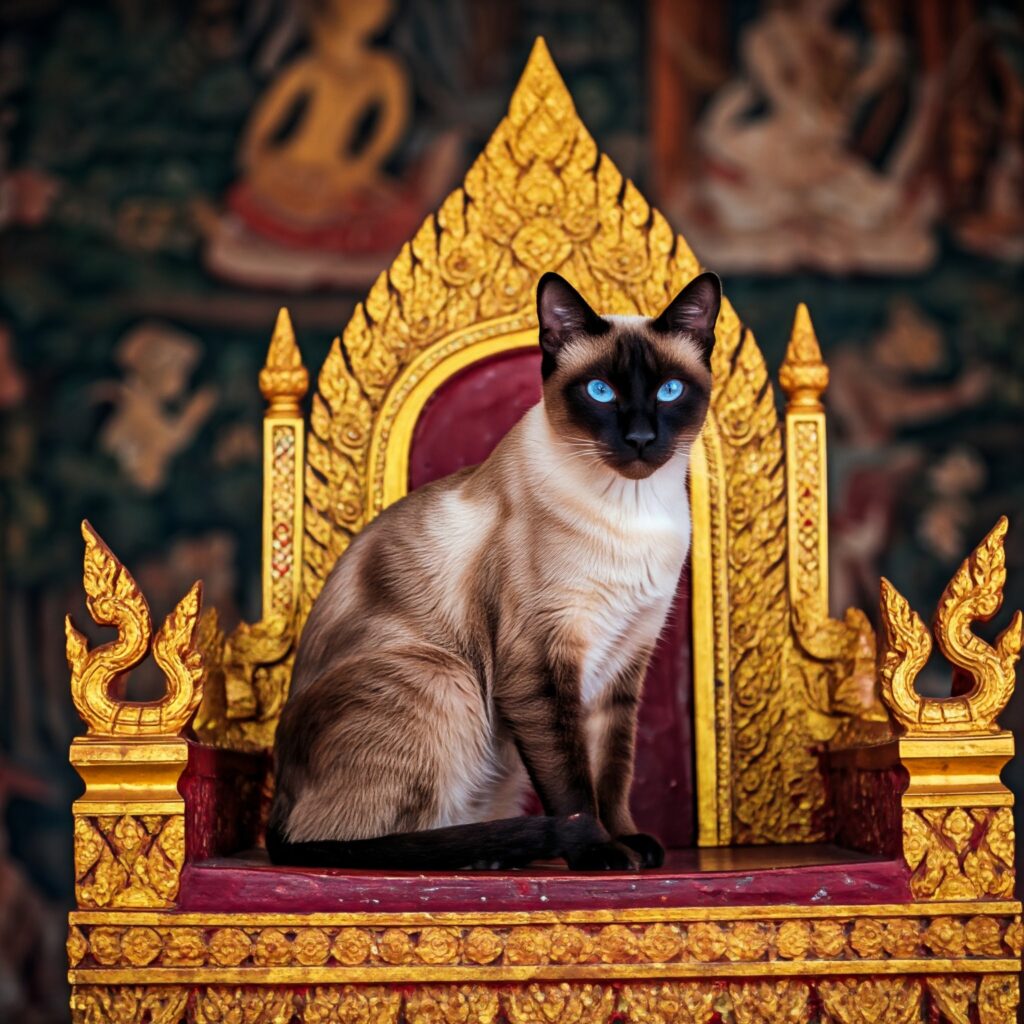
The rich history of Siamese cats has brought them into the hearts of pet lovers worldwide.
The history of Siamese cats is filled with stories of admiration and affection.
Learning about the history of Siamese cats helps us appreciate their unique lineage.
The history of Siamese cats is a testament to their enduring popularity and charm.
Understanding the history of Siamese cats helps us connect with them on a deeper level.
The rich and varied history of Siamese cats adds depth to their already fascinating personality.
As we explore the history of Siamese cats, we uncover a lineage steeped in culture and reverence.
The history of Siamese cats is vibrant and colorful, much like their stunning coats.
So, while through the History of Siamese cats have been known and cherished for hundreds of years, it wasn’t until the 19th century that they truly began to make their mark in the Western world!
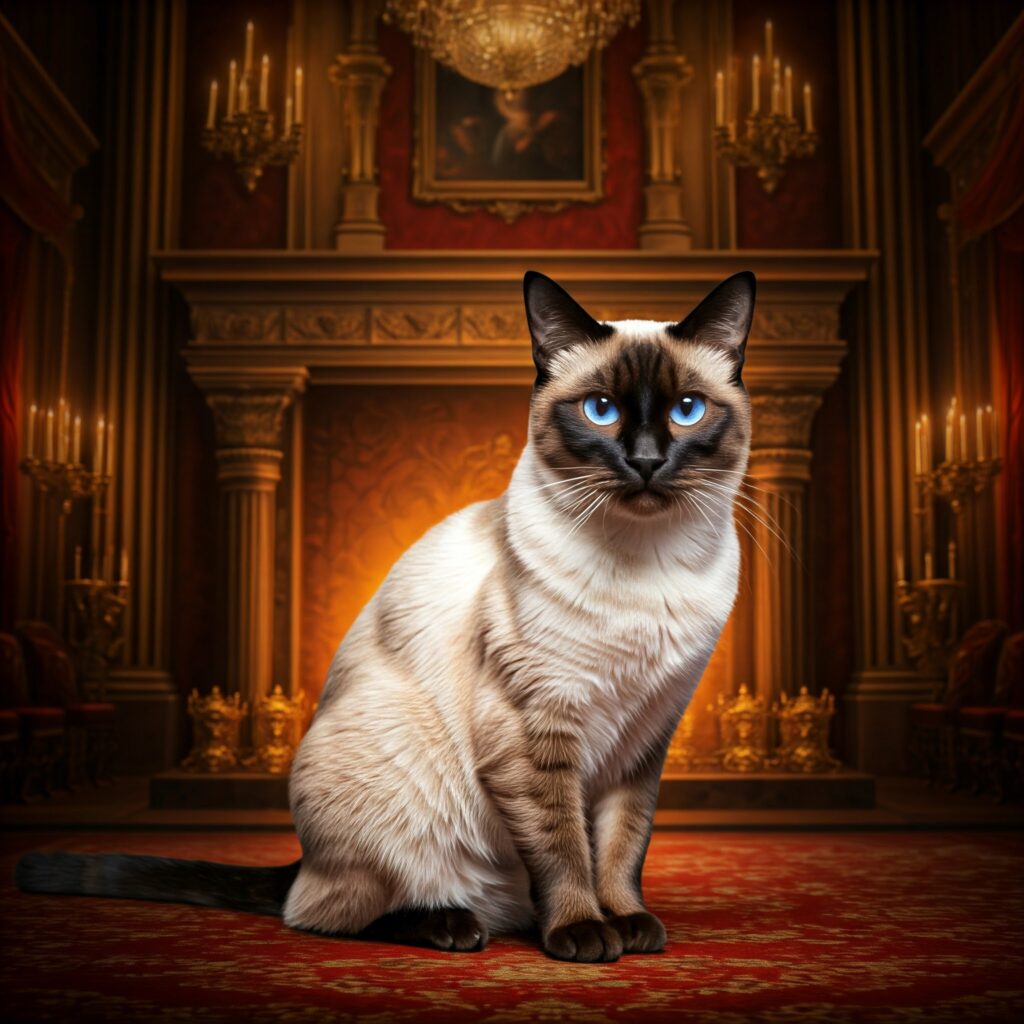
The captivating history of Siamese cats continues to inspire and intrigue cat lovers around the globe.
So, the history of Siamese cats is not just about their beauty; it’s also about their rich cultural significance.
As we delve deeper into the history of Siamese cats, we find a tale of admiration and love.
The history of Siamese cats highlights their journey from revered animals to household companions.
Throughout the history of Siamese cats, they’ve maintained their status as beloved pets.
As we reflect on the history of Siamese cats, we appreciate their unique contribution to our lives.
The history of Siamese cats reminds us of their importance in feline heritage.
One fascinating thing I learned while researching the history of Siamese cats is how they were often gifted to royalty or nobility as symbols of respect and honor. They were so prized that owning one outside of Siam was almost impossible—unless, of course, you were someone incredibly influential. That all changed in the late 1800s, when the first Siamese cats were brought to England and the United States. The story goes that a breeding pair full of Siamese cats was gifted to a British diplomat, sparking Western fascination with the breed. The Siamese Cat Club, founded in 1901, played a significant role in promoting and celebrating this unique breed.
The rich history of Siamese cats continues to be celebrated by enthusiasts today.
In conclusion, the history of Siamese cats is a chronicle of beauty, grace, and companionship.
From their beginnings in Siam to their modern adaptations, the history of Siamese cats is rich and varied.
As we look back on the history of Siamese cats, we find a story that continues to enchant.
Every aspect of the history of Siamese cats adds to their mystique and allure.
The legacy and history of Siamese cats will continue to resonate with future generations.
By the 20th century, Siamese cats were the “it” breed, especially in Europe and America. Over time, their appearance began to evolve. Originally, they had rounder faces and stockier builds, but breeders started favoring a sleeker, more angular look—which is how we got the modern Siamese we know today. It’s fascinating to see how they’ve transitioned from temple guardians to runway models of the feline world!

Traditional History of Traditional Siamese Cats (Old-Style)
If you’ve ever seen a traditional Siamese cat, you might notice something different compared to their modern counterparts. Their round, apple-shaped heads and sturdy bodies set them apart from the sleek, angular look of the contemporary Siamese. Personally, I find their softer, old-world appearance incredibly charming—it’s like looking at a living piece of history!
These cats, sometimes called “Thai Siamese,” closely resemble the original Siamese cats from Thailand. They have a more robust build, with shorter legs and a less exaggerated profile. While the modern Siamese might be the poster child for elegance, traditional Siamese cats have a coziness about them that feels downright comforting.
History of Siamese cats were known for their kinked tails, a trait linked to legends where they were tasked with guarding royal goblets. Although kinked tails on royal cats were once common, this trait is now considered a fault and has largely been bred out, though it can still be found among some street cats in Thailand.
In summary, the history of Siamese cats is an inspiring journey through time and culture.
When it comes to their coats, they still have the classic color points that the breed is known for: Seal, Chocolate, Blue, and Lilac Points. Seal Points, with their deep, dark brown markings, are the most iconic. Chocolate Points are a bit lighter and warmer, almost like milk chocolate (adorable, right?). Blue Points have a smoky, grayish tone, while Lilac Points are the most delicate, with pale gray markings and a pinkish hue. Each color combination is stunning in its own way!
One thing I learned while looking into the history of Siamese cats is that traditional Siamese cats tend to have a slightly mellower personality compared to their modern cousins. They’re still affectionate and intelligent but not quite as demanding or vocal. If you’re someone who wants a Siamese without the constant “conversations,” the traditional type might be a better fit.
These beautiful cats have been gaining popularity in recent years as people seek out breeds with a more “natural” look. Breeders who specialize in these old-style Siamese are keeping their legacy alive, often referring to them as “Thai Siamese” to emphasize their connection to their roots. Honestly, I think it’s amazing how we can still enjoy a breed so closely tied to its historical origins.
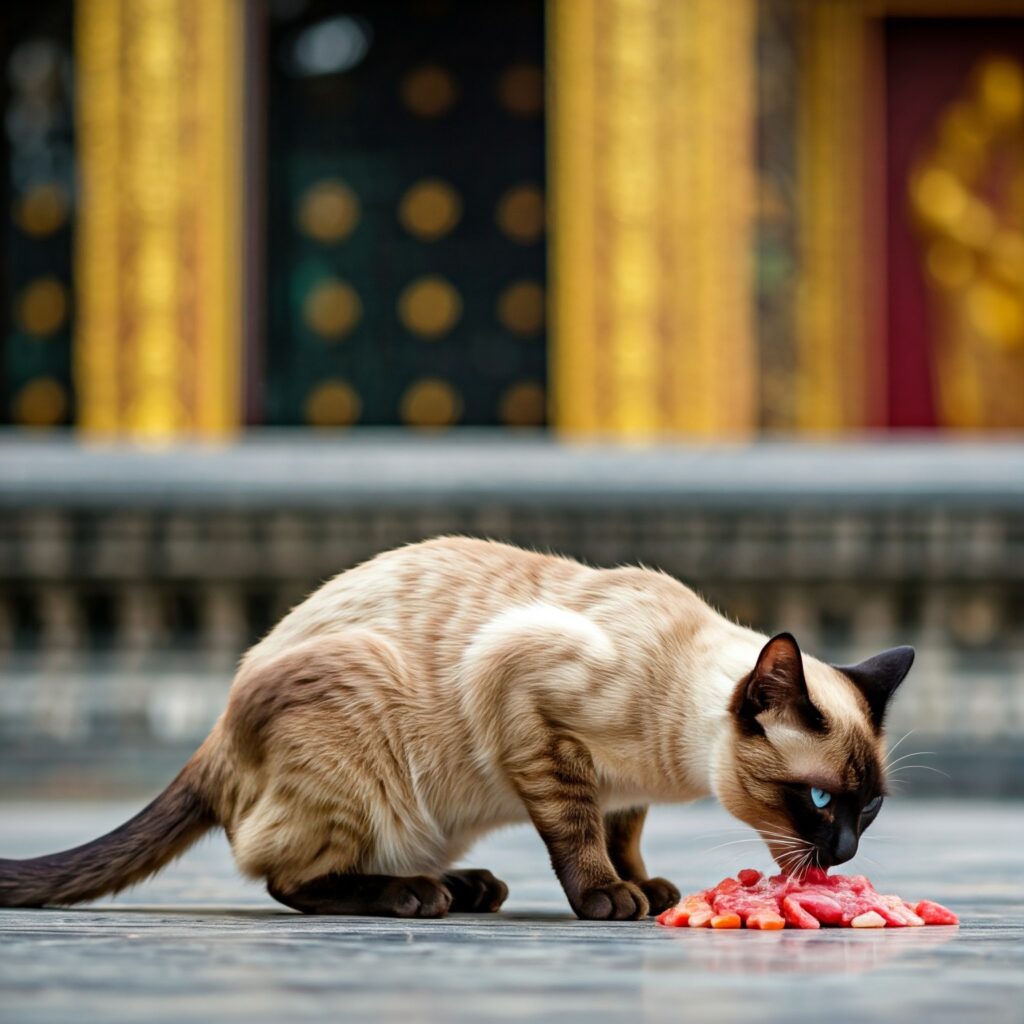
Modern History of Modern Siamese Cats (Show Style)
Modern Siamese cats are like the supermodels of the cat world—tall, sleek, and impossibly graceful, with a distinctive wedge-shaped head and sleek body. They’re the result of years of selective breeding to achieve that iconic wedge-shaped head, long body, and piercing blue eyes. I remember seeing one at a cat show for the first time and being completely mesmerized. It’s almost like they were designed to turn heads.
Their almond-shaped eyes are perhaps their most striking feature. They have this intense, almost otherworldly stare that can make you feel like they’re reading your mind. It’s no wonder they’re such a hit at cat shows. Judges and audiences alike are drawn to their refined appearance and their confident, playful demeanor.
The International Cat Association plays a significant role parent breed and in recognizing the different types of Siamese cats, including the distinction between traditional and modern breeds.
One thing you should know about modern Siamese cats is that they are talkers. Throughout the history of siamese cat breeds, these cats will not hesitate to let you know what’s on their mind—whether they’re hungry, bored, or just in the mood to chat. It’s the funniest thing if you love a verbal breed that loves the relationship brought on by verbal communication. And trust me, their voices are unforgettable. They have a raspy, almost “yowling” meow that’s full of personality. Some people find it endearing (I do!), but it can be a bit much if you’re someone who values peace and quiet.
In terms of their coat, modern Siamese share the same classic color points as their traditional cousins—Seal, Chocolate, Blue, and Lilac. However, their bodies are leaner, and their fur is incredibly fine, almost like silk. It makes them look even more refined, but it also means they’re a little more sensitive to the cold. Don’t be surprised if your Siamese insists on cuddling up under your blanket during winter!
Modern Siamese cats are incredibly social, too. If you’re someone who spends a lot of time at home and wants a four-legged companion who’ll follow you everywhere, this is your cat. But be warned—they thrive on attention and can get lonely if left alone for long periods.

Characteristics of Siamese Cats
Siamese cats are truly a sight to behold. With their sleek, muscular bodies and athletic build, they exude a sense of grace and agility. One of the most distinctive features of Siamese cats is their wedge-shaped head, which gives them a unique and elegant profile. Their long necks and slender tails add to their refined appearance, making them look like feline royalty.
But what really captures your attention about siamese royalty are their eyes. Siamese cats have almond-shaped eyes that are a deep, mesmerizing blue. It’s almost as if they can see right through you with their bright, piercing gaze. These eyes are not just beautiful; they are a hallmark of the breed, adding to their mystique and charm.
The pointed coat pattern of a Siamese cat is another standout feature. It’s short, fine, and glossy, giving them a polished look. The pointed pattern of their coat is a result of a temperature-sensitive enzyme that affects melanin production. This means that the cooler parts of their bodies, such as their ears, face, paws, and tail, develop a darker coloration, while the warmer core areas remain lighter. This fascinating genetic trait results in the stunning color points that Siamese cats are known for, including Seal, Chocolate, Blue, and Lilac Points.
The captivating history of Siamese cats highlights their role in human lives.
In essence, Siamese cats are a perfect blend of beauty and elegance, with their striking features and unique coat patterns making them one of the most recognizable and beloved cat breeds in the world.
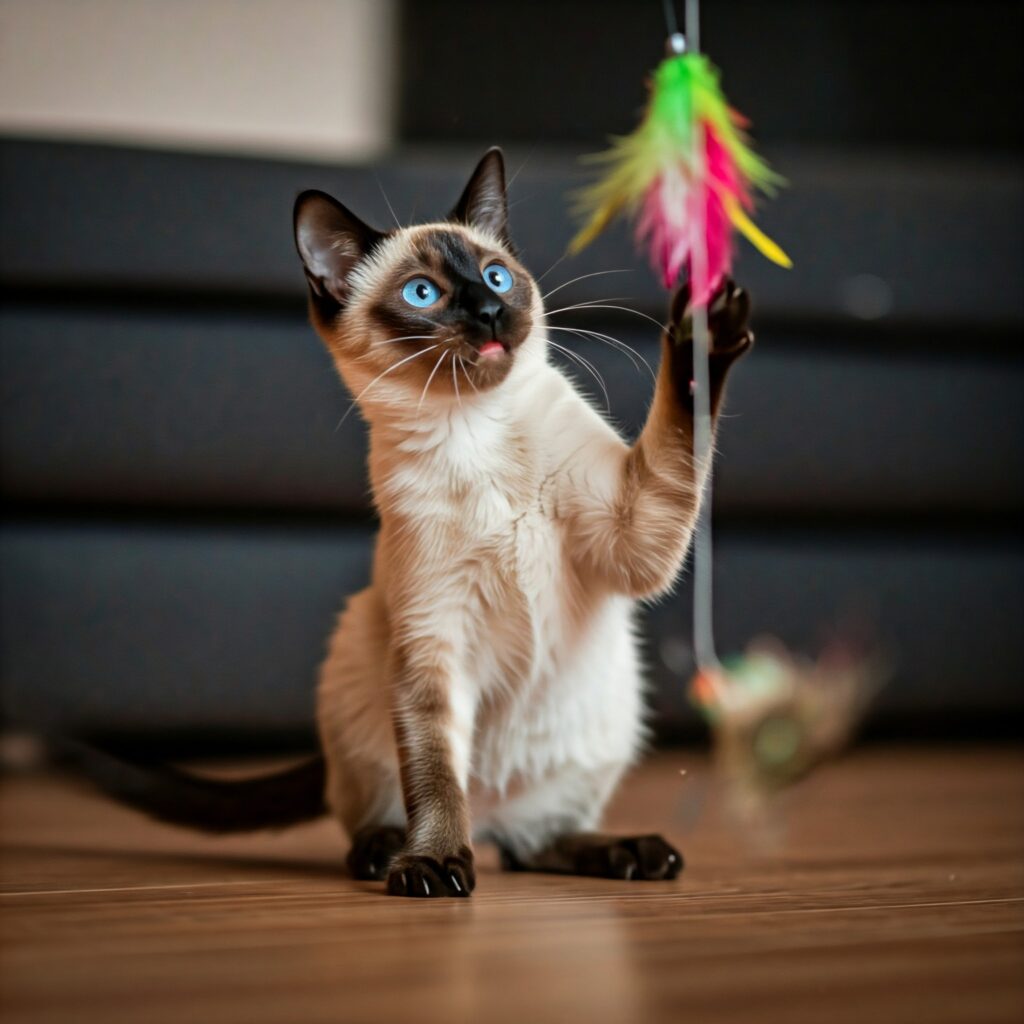
Personality and Temperament of Siamese Cats
If you’re looking for a cat with personality, look no further than the Siamese. These cats are the extroverts of the feline world, always ready to engage and interact with their human companionship. Siamese cats are known for their outgoing and energetic nature, making them a lively addition to any household.
One of the most endearing traits of Siamese cats is their vocal nature. They are often described as “talkative,” and for good reason. Siamese cats love to “chat” with their owners, using a range of sounds to express themselves. Whether they’re hungry, bored, or just in the mood for a conversation, they’ll let you know with their distinctive, raspy meows. It’s like having a little furry friend who always has something to say!
Siamese cats are also highly intelligent and curious. They thrive on mental stimulation and physical activity, so it’s important to provide them with plenty of toys and opportunities to explore. They enjoy interactive play and can even learn tricks, making them a joy to train and engage with.
Despite their lively nature, Siamese cats are incredibly affectionate. They form strong bonds with their human families and love to be involved in everything you do. Whether you’re working at your desk or relaxing on the couch, your Siamese will likely be right there with you, offering companionship and affection.
These cats are generally good with children and other pets, although they can be a bit wary of strangers at first. With time and patience, they usually warm up to new people, revealing their friendly and loving nature.
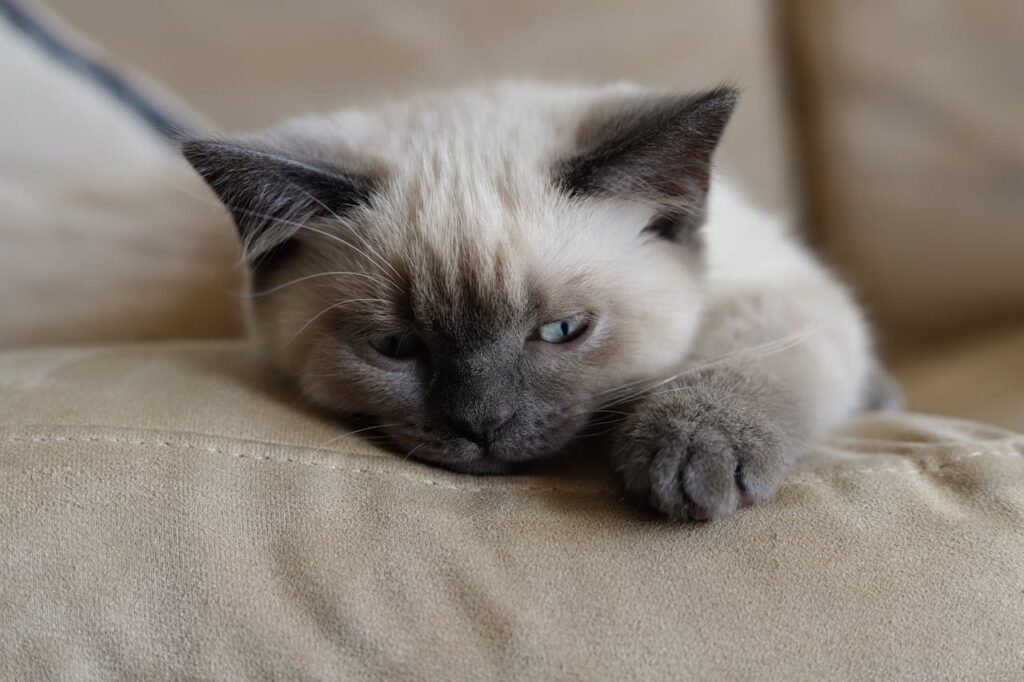
Color Variations Through the History of Siamese Cats
In short, Siamese cats are the perfect blend of intelligence, affection, and energy, making them wonderful companions for those who can keep up with their lively personalities.
One of the most fascinating things about Siamese cats is how their iconic color-point patterns develop. Did you know that all Siamese kittens are born completely white? Yep, they look like little snowballs! Their color points—those darker markings on their ears, face, paws, and tail—don’t start to appear until a few weeks after birth. It’s all thanks to a temperature-sensitive gene. The cooler parts of their bodies develop the darker pigmentation, while the warmer core areas stay lighter. Isn’t that incredible?
The Siamese breed group has significantly influenced the development of various other breeds, including the Balinese and Oriental Shorthair.
The four classic Siamese colors are Seal, Chocolate, Blue, and Lilac Points, each more stunning than the last. Seal Point is the most traditional, with rich, dark brown points that contrast sharply against their cream-colored coat. It’s like they’re wearing little dark socks and a mask! Chocolate Points are a bit lighter, with a milkier brown hue and a warmer undertone. These chocolate point siamese cats remind me of cozy evenings with a cup of hot cocoa—just as comforting.
Blue Points and Lilac Points offer cooler-toned variations. Blue Points have slate-gray markings, while Lilac Points are even softer, with frosty gray accents and a hint of pinkish tones. Lilac Points are sometimes called the “pastel point Siamese” because of their delicate, dreamy appearance. Honestly, they look like they stepped straight out of a fairytale.
But wait—there’s more! Modern breeders have expanded the Siamese color palette with some rarer variations, like Flame, Lynx, and Tortie Points. Flame Points have striking reddish-orange markings and are often referred to as “Red Siamese.” They’re not technically pure Siamese, as they’re the result of crossbreeding with other cats, but they’re undeniably gorgeous. I point your attention to exhibit A.
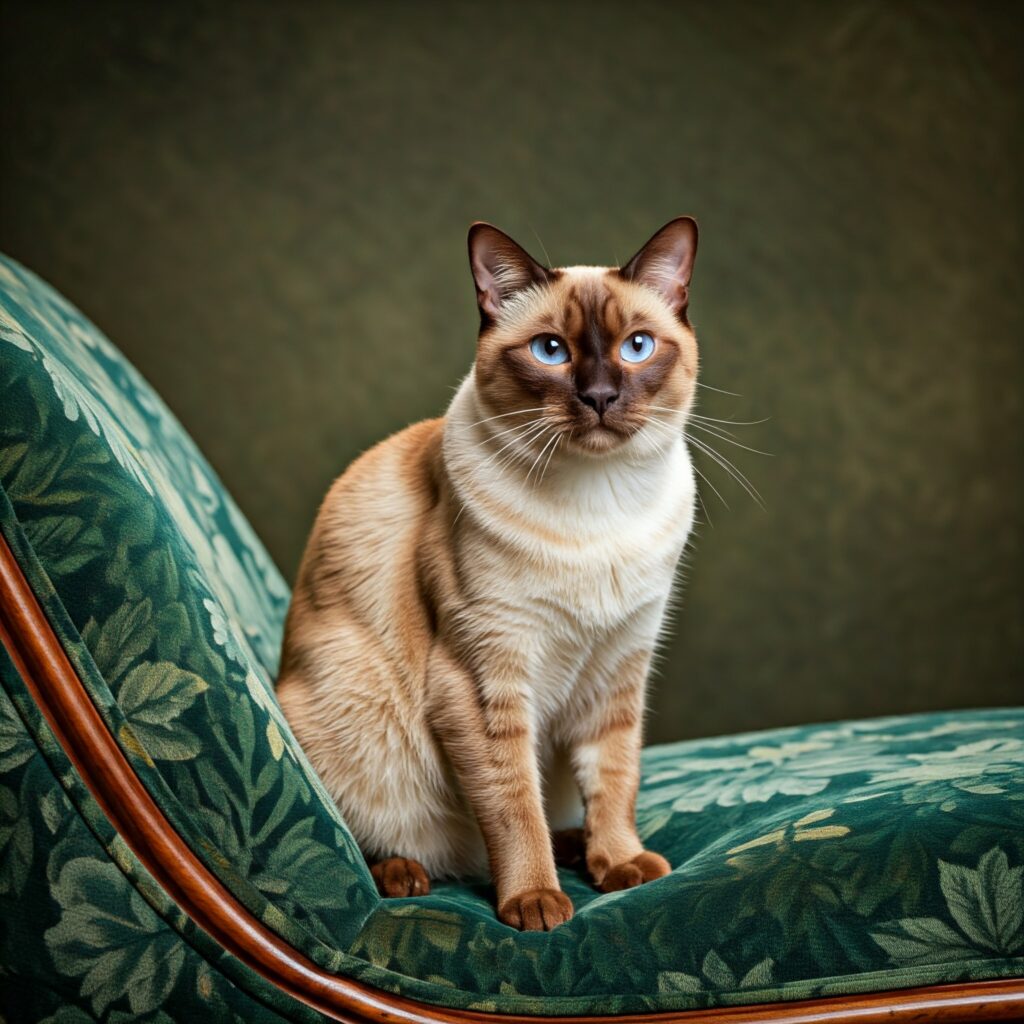
Lynx Points are another favorite, with subtle tabby-like stripes on their points. They come in various colors, from Seal Lynx to Blue Lynx, and their patterns add a unique twist to the traditional Siamese look. Tortie Points, on the other hand, have a marbled blend of colors, often combining cream, brown, and orange in their markings. It’s like a painter decided to go wild with their brush—truly one of a kind!
One fun fact about Siamese cats is that their color patterns can change slightly over time. Older cats, especially Seal and Chocolate Points, often develop darker coats as they age. It’s like they’re showing off their wisdom with a little extra flair!
If you’re considering getting a Siamese cat, their color variation might be something to think about. Whether you prefer the boldness of Seal Points or the rarity of Lynx Points, there’s a Siamese cat for every aesthetic. And no matter which color you choose, you’re guaranteed to have a national siamese cat day, with that distinctive elegance and charm this breed is known for.
The Oriental Shorthair, a breed developed from the Siamese breed group, shares many physical characteristics with Siamese cats, including their coat textures and patterns.
Myths and Misconceptions About Siamese Cats
Despite their popularity, Siamese cats are often surrounded by myths and misconceptions. Let’s set the record straight and debunk some of the most common myths about these fascinating felines.
One prevalent myth is that Siamese cats are aloof and distant. This couldn’t be further from the truth. While they may have an independent streak, Siamese cats are highly social and affectionate. They thrive on human interaction and love to be involved in their owners’ lives. If you’re looking for a cat that will form a close bond with you, a Siamese is a great choice.
Another misconception is that Siamese cats are prone to health problems. While it’s true that they can be susceptible to certain issues, such as crossed eyes and respiratory problems, responsible breeding and proper care can minimize these risks. Many Siamese cats live long, healthy lives with the right attention and veterinary care. It’s important to choose a reputable breeder and provide regular check-ups to ensure your Siamese stays in good health.

Some people believe that Siamese cats are only suitable for experienced cat owners. While their energetic and vocal nature might be a bit overwhelming for some, Siamese cats can make wonderful pets for anyone willing to invest time and effort into their care. They are intelligent and adaptable, and with proper training and socialization, they can thrive in a variety of households.
In conclusion, Siamese cats are not the aloof, high-maintenance pets that some myths suggest. They are loving, social, and intelligent companions that can bring joy and excitement to any home. With the right care and attention, a Siamese cat can be a delightful addition to your family, regardless of your experience level.
Balinese and Their Siamese Connection
If you’ve ever seen a Balinese cat, you might have thought, “That looks like a Siamese, but fluffier!” And you’d be absolutely right. Balinese cats are often called the “long-haired Siamese,” a cat breed that combines the elegance of Siamese cats with a soft, silky twist, making them a popular choice for cat lovers who want the Siamese personality but with extra floof.
The Balinese breed originated from a natural mutation in Siamese cats that resulted in longer fur. This trait was likely hidden in the Siamese gene pool for years until breeders noticed and decided to preserve it. They were eventually given their own breed name, inspired by the graceful dancers of Bali. Fun fact: despite the name, Balinese cats don’t have any historical connection to Bali—it’s all about their elegant, flowing movement.
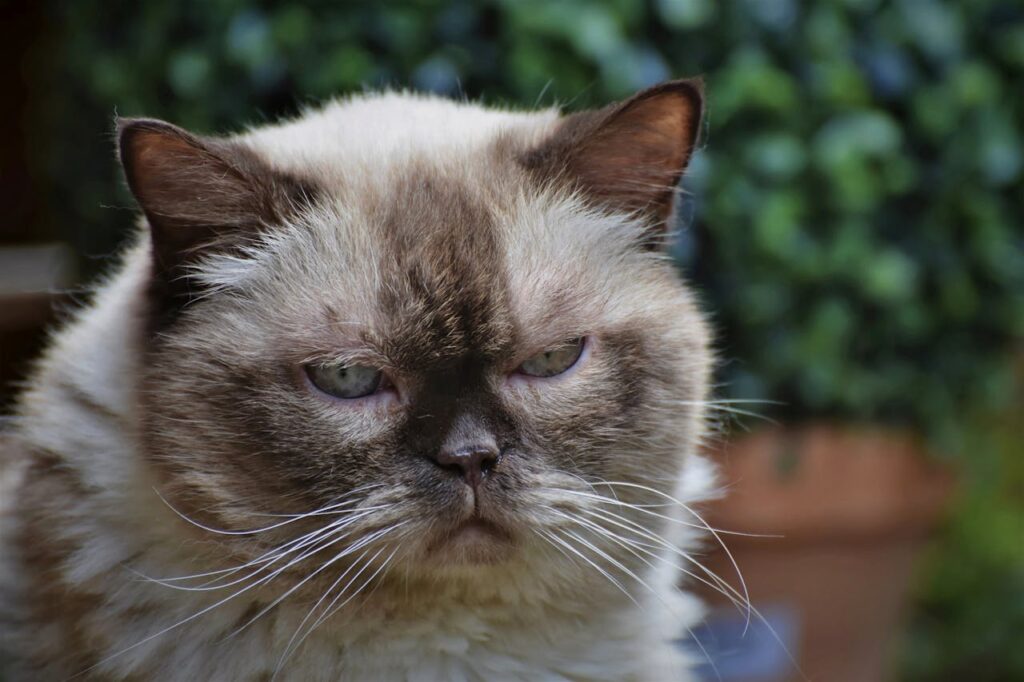
One of the things I love about Balinese cats is how similar they are to Siamese cats in personality. They’re just as intelligent, affectionate, and vocal. If you’ve ever wanted a cat that feels like a true companion, a Balinese fits the bill. They’ll follow you around the house, “talk” to you about their day, and even pick up on your moods. That said, their voices tend to be a little softer compared to Siamese cats, which some people find more pleasant.
Balinese cats also share the same stunning color-point patterns as Siamese cats: Seal, Chocolate, Blue, Lilac, and even the rarer variations like Flame and Lynx Points. Their long, luxurious coats give these colors a slightly softer appearance, almost like the edges of their markings have been airbrushed. Despite their fluffier look, their fur doesn’t have an undercoat, so they’re less prone to matting than other long-haired breeds. A quick brush once or twice a week usually keeps them looking their best.
One key difference between Balinese and Siamese cats is how they feel to the touch. While Siamese cats have sleek, short coats, Balinese cats have a coat that’s silky and feather-light. It’s like petting a cloud! Because of this, they’re also better suited for people who want the Siamese vibe but don’t mind a bit more grooming.
Siamese kittens have also been featured prominently in various cultural contexts, particularly in literature and film, showcasing their unique traits and the special bond they share with humans.

If you’re trying to decide between a Siamese and a Balinese, consider your lifestyle. Both breeds thrive on attention and companionship, so they’re ideal for homes where someone is around often. But if you want a cat with the Siamese personality and a little extra glamour, the Balinese might just steal your heart.
Siamese Breed or Himalayan Breed
In Conclusion
the history of Siamese cats is truly remarkable. From their origins in the 14th century to their popularity today, these elegant felines have captivated hearts with their sleek coats and affectionate personalities. Whether you choose a Siamese or a Balinese, both breeds offer a unique charm and require regular grooming to maintain their stunning appearances. However, if you desire the Siamese vibe with a touch of added glamour, the Balinese cat is sure to fulfill your desires. Make your decision wisely, and let a Siamese or Balinese cat become your loving companion.
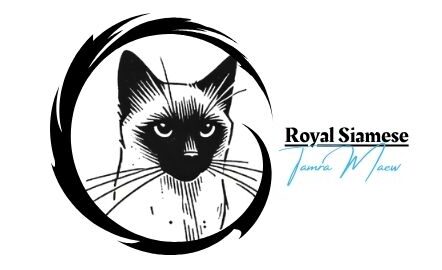
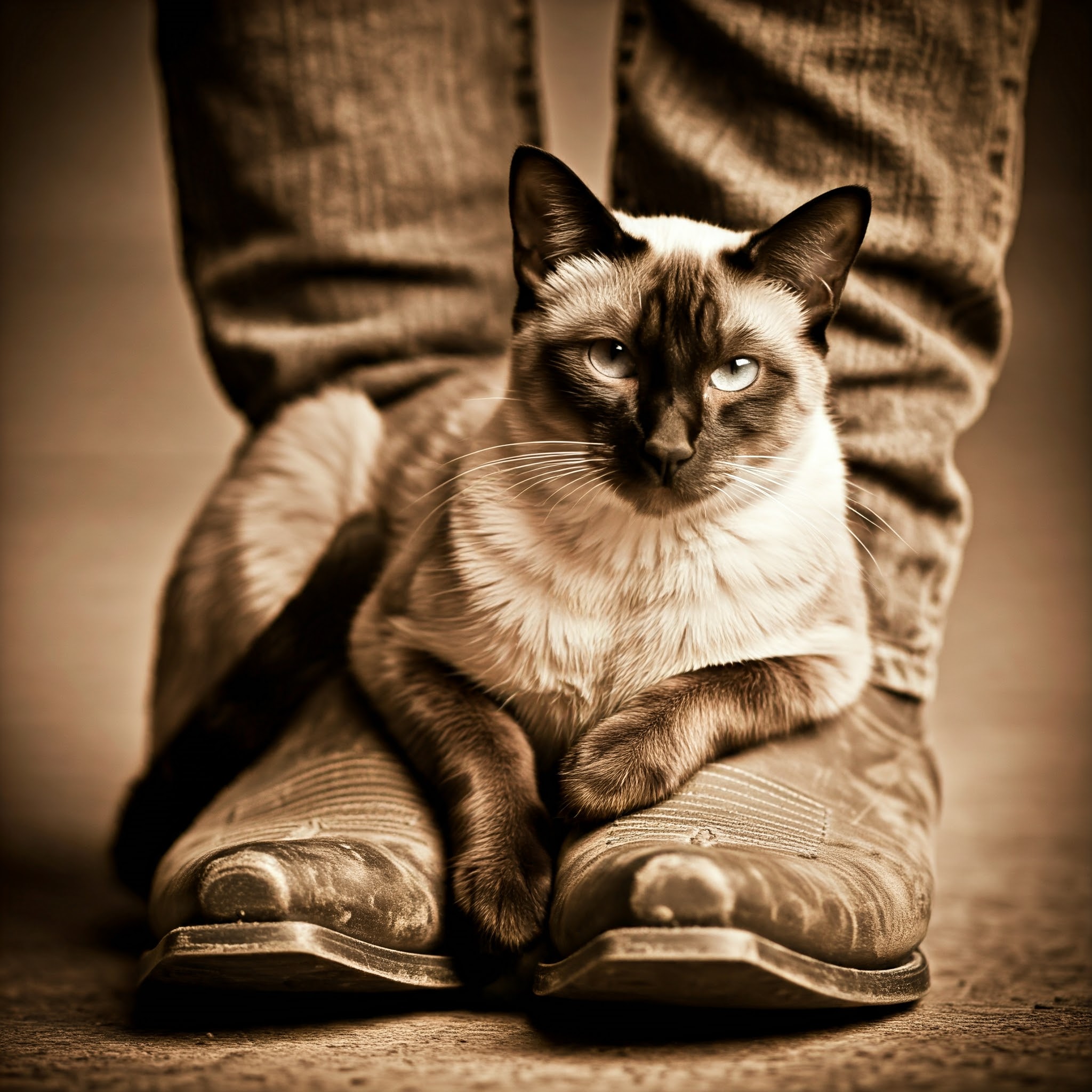
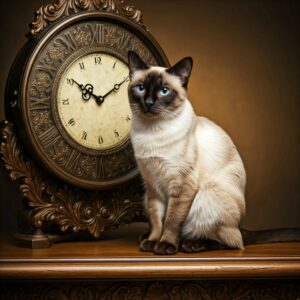


Pingback: Siamese vs Persian Cats: The World of Feline Elegance
Pingback: How long do Siamese Cats Live? The Timeless Nine Lives
Pingback: Do Siamese Cats Get along with Dogs. You may be Surprised.
Pingback: Siamese Kittens : A Fun Guide to Their Unique Charm
Pingback: How and Why Siamese Cats Change Color: Nature's Artistry is Exciting. - royaltopics.com
Pingback: Are Siamese Cats Rare and What Makes Them So Unique?
Pingback: Do Siamese Cats Meow a Lot? Discover the Vocal Truth
Pingback: Do Siamese Cats Like Water More Than Other Breeds? - Know!
Pingback: What Siamese Cats Symbolize in Different Cultures - Find out
Pingback: Ultimate guide to how many types of siamese cats exist
Pingback: Siamese Cat Traits That Make Them Unique Companions
Pingback: Siamese Cat Personality, the real scoop goes beyond the eyes
Pingback: Siamese Cat Personality Problems and guidance to correction
Pingback: Are Siamese Cats Good Hunters? Spoiler: Mice Beware
Pingback: What is CFA Siamese? The Elite Cat You Need to Meet
Pingback: The Complete Siamese Cat Fancier Guide to Show Success